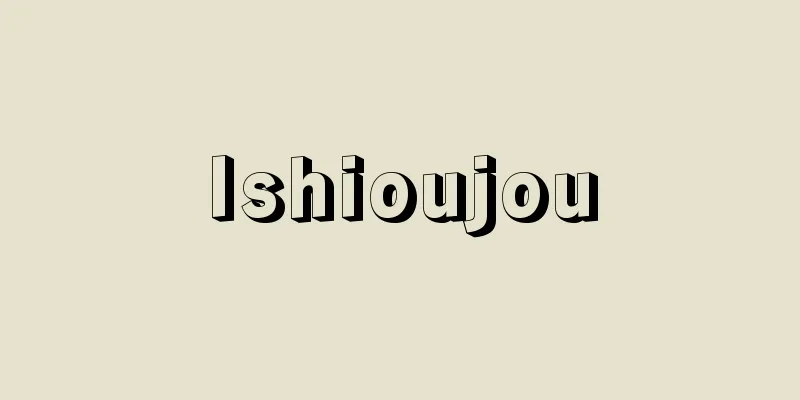Ishioujou

|
〘Noun〙 A type of Noh mask. It is said to have been named after Ishiobei, who created it. It is a mask that depicts an old man, and can also be said to be a mask for dancing that represents the deity of the after-jite in a waki-noh performance. It is said to have been used by the Shimogakari (Konparu, Kongo, and Kitasan schools) since ancient times. It is used in plays such as "Ugetsu," "Yugyoyanagi," and "Hakurakuten." Ishio. Ishiobei. Source: The Selected Edition of the Japanese Language Dictionary About the Selected Edition of the Japanese Language Dictionary Information |
|
〘名〙 能面の一つ。石王兵衛が創作したので、この名があるという。老人を表わす面で、脇能物の後ジテの神体を意味する舞のための面ともいえる。古くから下掛かり(金春、金剛、喜多三流)がこれを用いたという。「雨月」「遊行柳」「白楽天」などに用いられる。石王。石王兵衛。
出典 精選版 日本国語大辞典精選版 日本国語大辞典について 情報 |
<<: Stone-laying board roofing - Ishiokiitabuki
Recommend
Neorealismo (English spelling)
A term that indicates the trend and tendency that...
Attack aircraft - Carrier-borne aircraft
An aircraft to be deployed on an aircraft carrier...
Rhinoptera javanica (English spelling) Rhinoptera javanica
...They give birth to 5-8 young in the summer. Th...
Ecclesia (Christianity) - Ecclesia
...In this sense, Christian artists of every era ...
Seiro [town] - Seiro
A town in Kitakanbara County in northern Niigata P...
Wolf-Pariza Star Chart
...In the 20th century, photographic atlases were...
Huarache (English spelling)
Footwear worn by the indigenous people of Mexico. ...
Secretarybird (snake-eating eagle) - Secretarybird (English spelling)
A bird of the family Secretarybird (illustration) ...
Student Labor Mobilization - Gakukinro Doin
The forced mobilization of students to the industr...
flow reactor
...This is because the reaction rate constant gen...
Hirakana Seisui-ki - Hirakana Seisui-ki
A joruri gidayuu style piece. A historical piece....
Spherical shell tectonics
...Deep earthquake zones also exist, although the...
Awataguchi - Awataguchi
[1][One] The name of a place in Higashiyama Ward, ...
Ganami - Ganami
?-? A monk from the Muromachi period. Jishu sect....
Anemia (English spelling) flowering fern
Native to Central America, this fern is now common...









